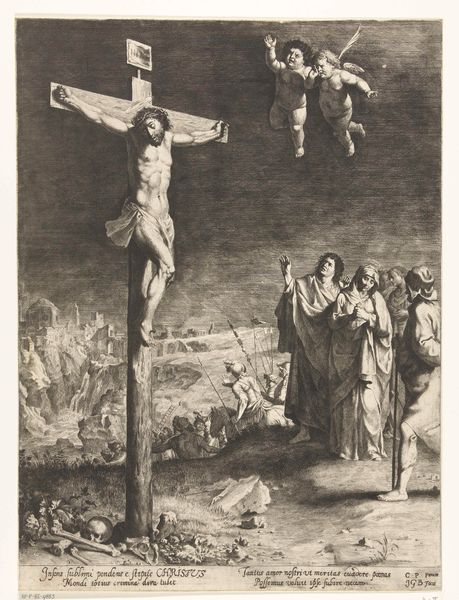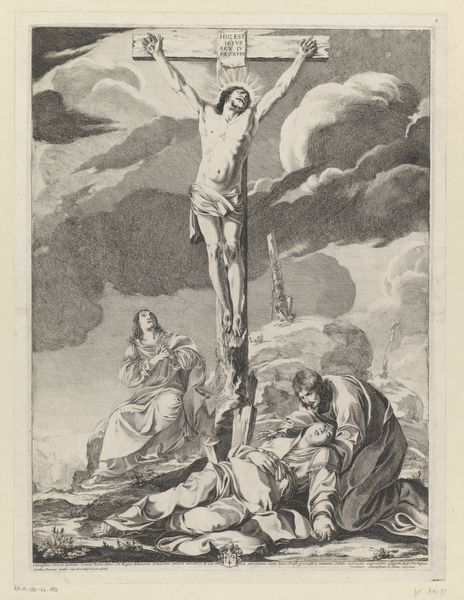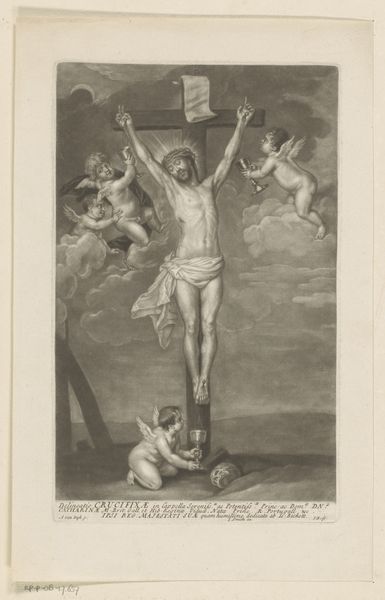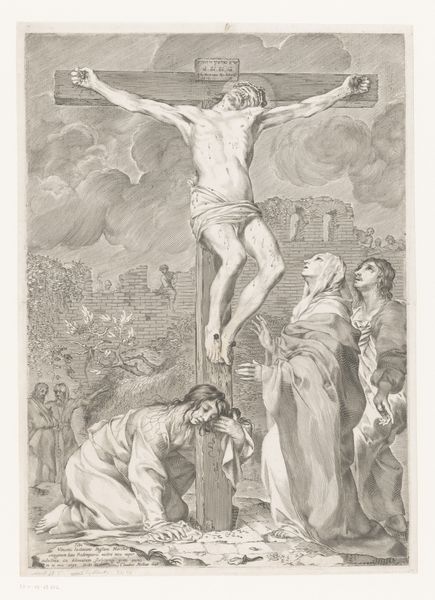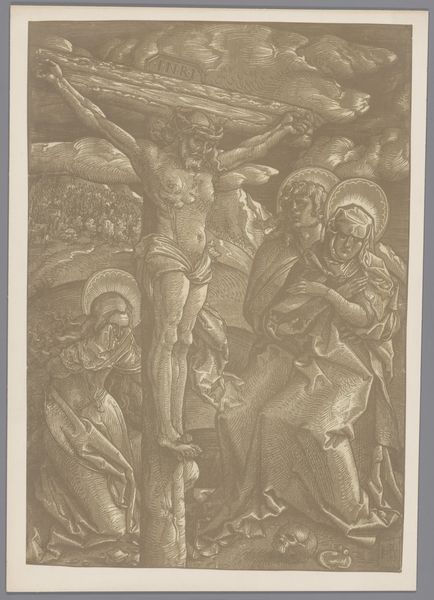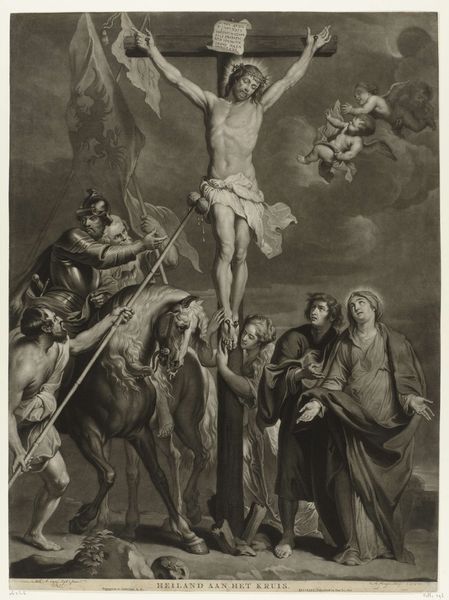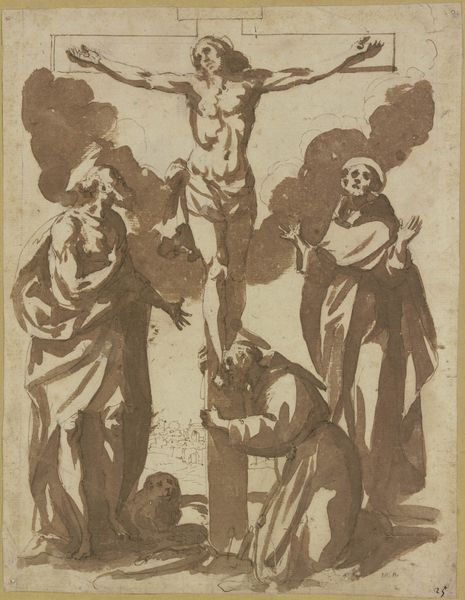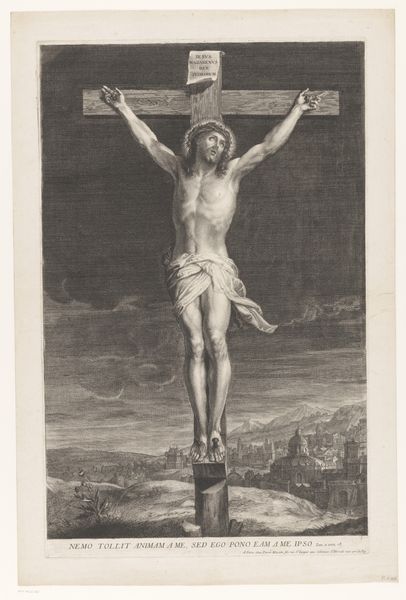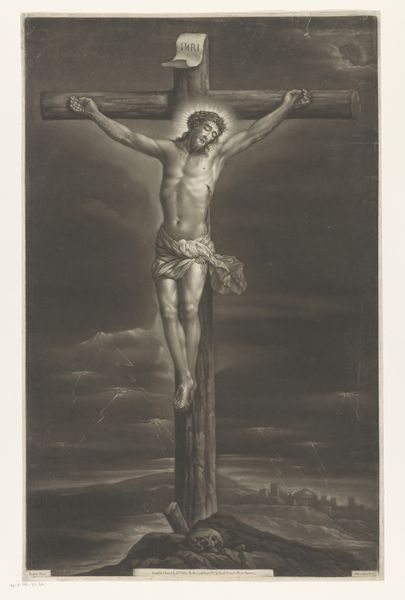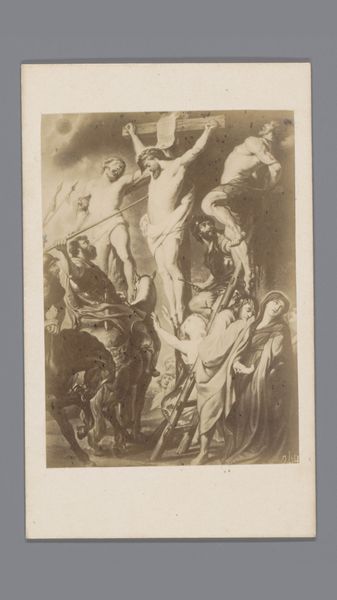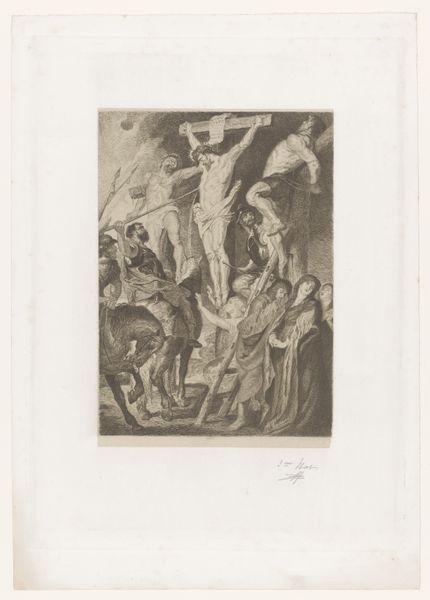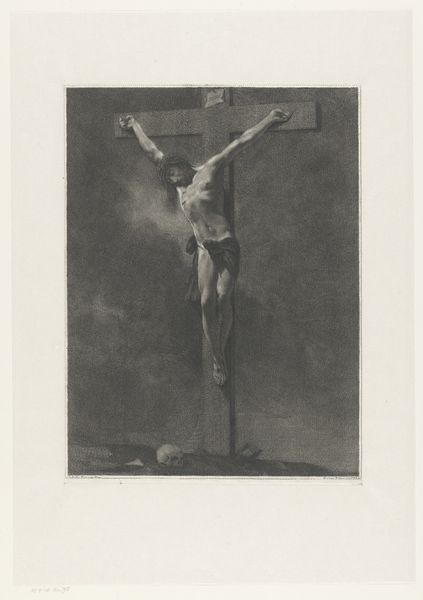
Fotoreproductie van een prent van Christus aan het kruis naar het schilderij van Van Dyck 1855 - 1885
0:00
0:00
Dimensions: height 106 mm, width 64 mm
Copyright: Rijks Museum: Open Domain
Editor: Here we have a photograph, a gelatin-silver print from between 1855 and 1885. It's labeled as a photographic reproduction of a print after Van Dyck’s painting of Christ on the cross. The print has a sepia tone and it evokes a sense of solemnity and perhaps even romanticism despite the harshness of the subject matter. What stands out to you? Curator: Well, immediately I see the layering of production methods – it's a photograph of a print, which itself reproduces a painting. This distance from the ‘original’ is critical. How does each layer change the meaning and impact of the image, particularly concerning the labour involved? Editor: That's a really interesting point. How does focusing on production help us understand the piece? Curator: Thinking materialistically, we must ask, what social factors allowed for a reproduction like this to be created? What kind of audience consumes a photograph like this, versus, say, a handmade print or an oil painting? Where does value lie here: in the supposed artistic skill it documents, or the photograph’s potential for mass distribution? Also consider how these reproductive processes alter our relationship with images. Are we encouraged to engage or detach? Editor: I guess I hadn't really considered it as being part of a wider chain of production before. I was stuck on the religious imagery, which feels a bit separate. Curator: The imagery is undeniable. But even the religious subject can be viewed materially. How does the choice of depicting such an event intersect with, say, the photographic print market? Is it devotional, documentary, commercial, or something in between? What need did its manufacture satisfy? Editor: That reframes the whole image. It's less about the divine, more about the human processes of production and consumption that gave it life. I see that now! Curator: Precisely. Considering these works in relation to their means of creation sheds light on their socio-economic impact. It encourages us to explore art and craft, not as isolated feats, but as products deeply entangled with labor and materiality.
Comments
No comments
Be the first to comment and join the conversation on the ultimate creative platform.
